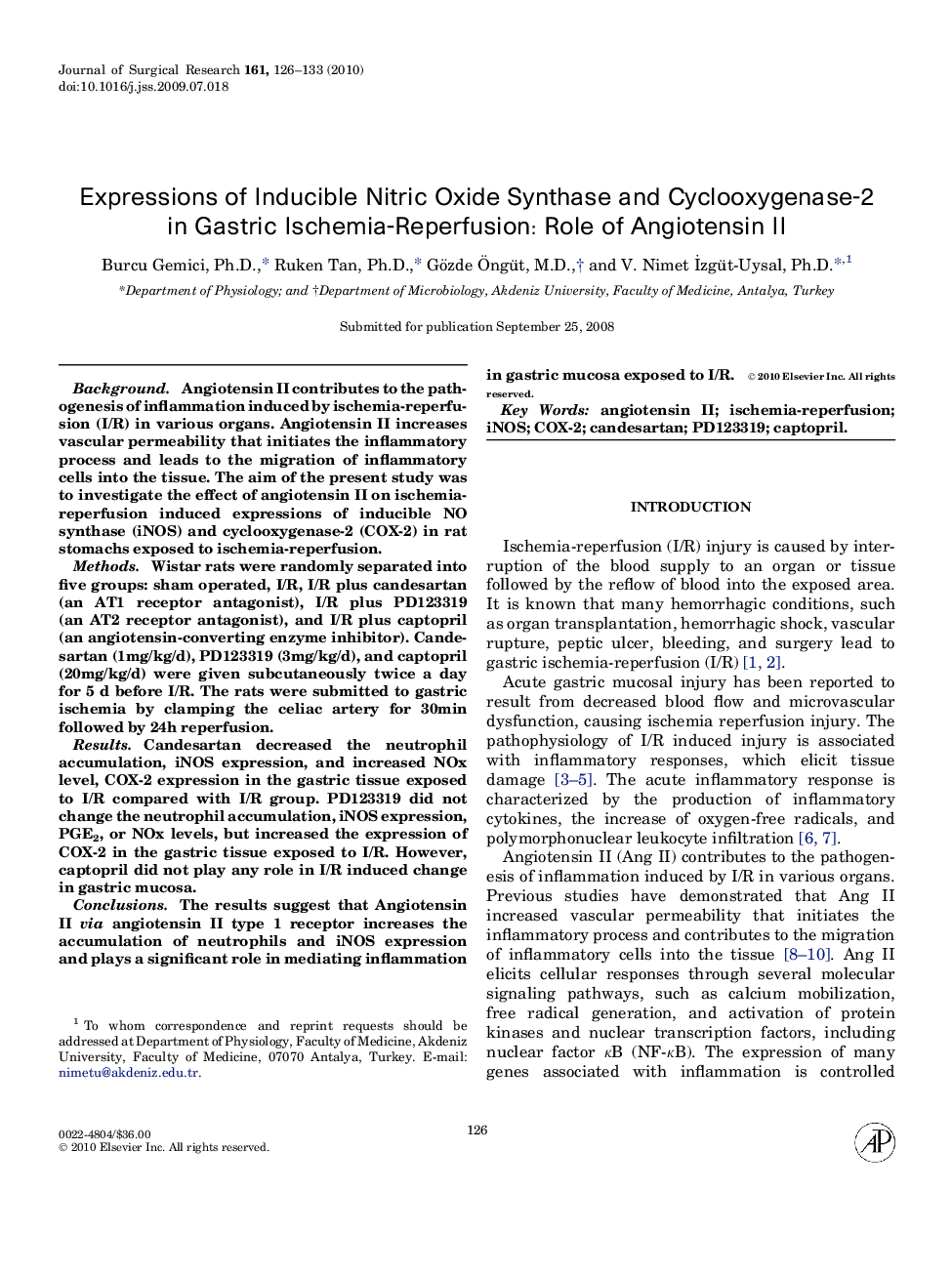| Article ID | Journal | Published Year | Pages | File Type |
|---|---|---|---|---|
| 4302947 | Journal of Surgical Research | 2010 | 8 Pages |
BackgroundAngiotensin II contributes to the pathogenesis of inflammation induced by ischemia-reperfusion (I/R) in various organs. Angiotensin II increases vascular permeability that initiates the inflammatory process and leads to the migration of inflammatory cells into the tissue. The aim of the present study was to investigate the effect of angiotensin II on ischemia-reperfusion induced expressions of inducible NO synthase (iNOS) and cyclooxygenase-2 (COX-2) in rat stomachs exposed to ischemia-reperfusion.MethodsWistar rats were randomly separated into five groups: sham operated, I/R, I/R plus candesartan (an AT1 receptor antagonist), I/R plus PD123319 (an AT2 receptor antagonist), and I/R plus captopril (an angiotensin-converting enzyme inhibitor). Candesartan (1mg/kg/d), PD123319 (3mg/kg/d), and captopril (20mg/kg/d) were given subcutaneously twice a day for 5 d before I/R. The rats were submitted to gastric ischemia by clamping the celiac artery for 30min followed by 24h reperfusion.ResultsCandesartan decreased the neutrophil accumulation, iNOS expression, and increased NOx level, COX-2 expression in the gastric tissue exposed to I/R compared with I/R group. PD123319 did not change the neutrophil accumulation, iNOS expression, PGE2, or NOx levels, but increased the expression of COX-2 in the gastric tissue exposed to I/R. However, captopril did not play any role in I/R induced change in gastric mucosa.ConclusionsThe results suggest that Angiotensin II via angiotensin II type 1 receptor increases the accumulation of neutrophils and iNOS expression and plays a significant role in mediating inflammation in gastric mucosa exposed to I/R.
